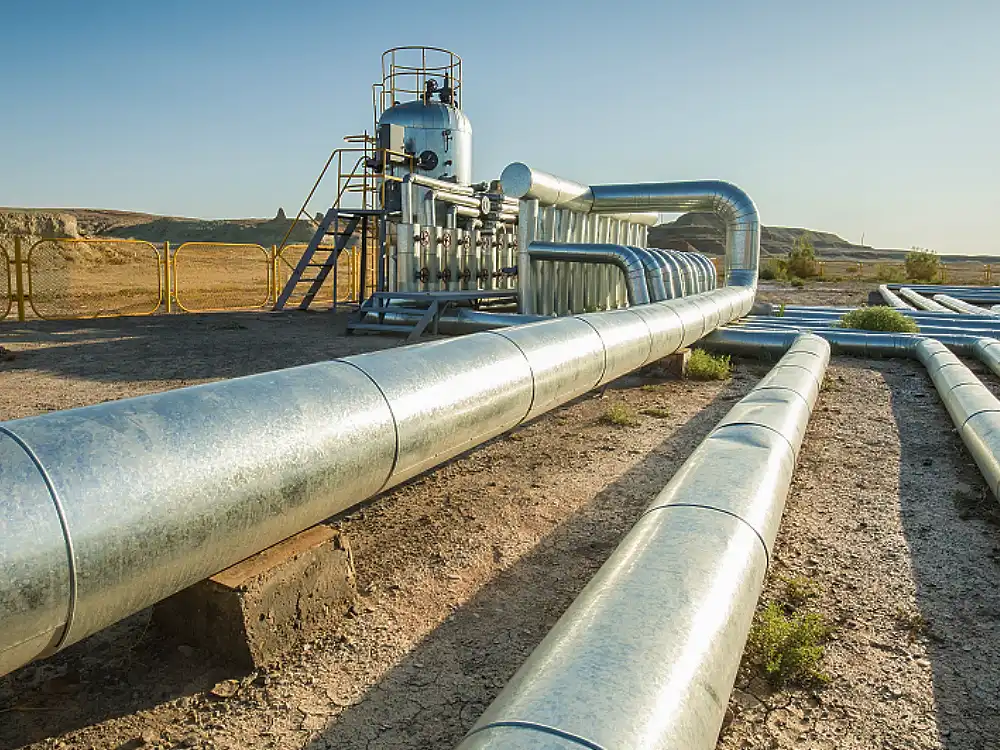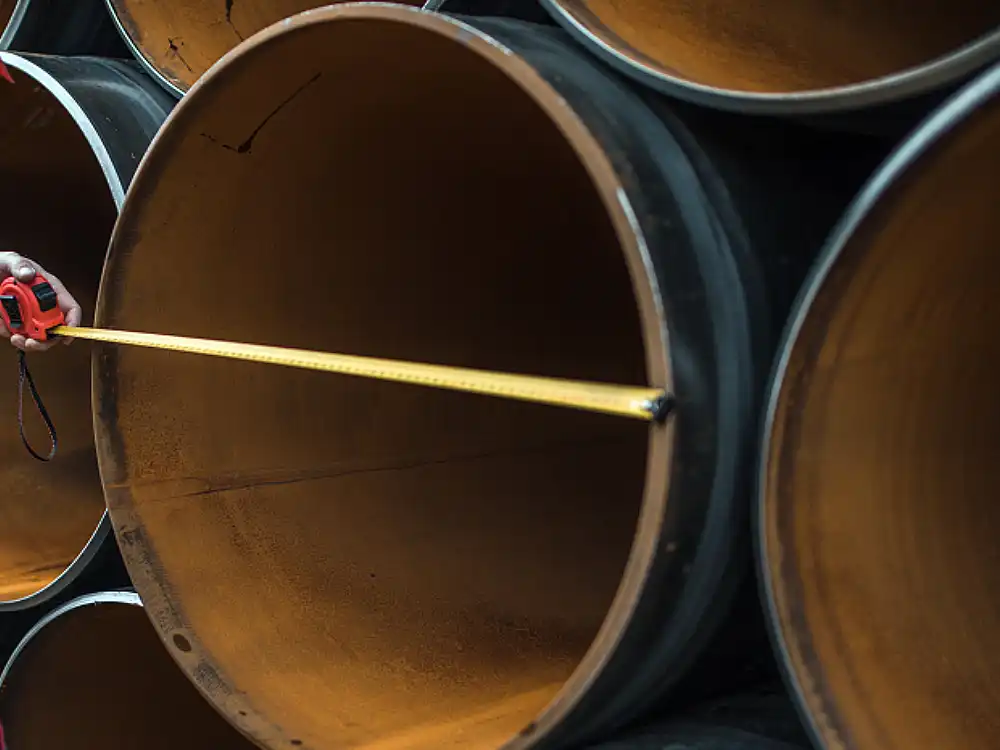
What is Schedule 80 Pipe?
A Schedule 80 pipe is the main component in different industrial settings and in construction. It stands out as a strong pipe and is famous for its reliability and strength.
It is easy to distinguish these Schedule 80 steel pipes from other pipes based on their increased wall thickness. That’s what makes them durable, and that’s why these pipes are used in high-pressure environments.
The thickness of Schedule 80 steel pipes strengthens them against extreme conditions. That’s why industries looking for dependable piping systems to withstand rigorous demands choose this.
Schedule 80 pipes are used in various sectors, from oil and gas to chemical processing plants. These pipes play a crucial role in conveying fluids seamlessly while keeping the operational parameters unchanged. Even with corrosive chemicals, these robust conduits keep it simple and even. Their most common use is in the construction industry, where they easily supply fluid to the tallest structures.
Look at “What is sch 80 pipe?” and how industries use them.
Understanding Schedule 80 Pipes
Schedule 80 pipes belong to a category of steel pipes that have distinctive features. One of them is their extraordinary pressure-bearing capability, along with their increased wall thickness.
Mainly, the classification of pipes into Schedules denotes that they’ve varying thicknesses. Lower Schedule pipes like Schedule 20 or Schedule 40 pipes are thinner. The thinner the pipe is, the less capable it is of withstanding extreme conditions and vice versa. It varies depending on what applications the industries need them for.
The enhanced structural integrity of Schedule 80 pipes makes them a strong contender in all industrial applications.
A Schedule 80 Steel pipe has Schedule 80 features. There are a total of more than 150 Schedules, with 5 being the lowest and 160 being the highest Schedule.
The lower the Schedule number, the lower the capability to bear pressure, and vice versa. Some pipes also expand or contract when exposed to high temperatures and pressures.
However, Schedule 80 steel pipes stabilize the process of fluid transport and minimize the risk of deformation. All in all, the adjustment of Sch 80 pipe thickness is in a way that it is useful for extreme conditions.
Schedule 80 Pipes Pressure Ratings and Dimensions
The Schedule 80 pipe dimensions, as well as size ranges, vary depending on their applications. In terms of size ranges, a sch 80 steel pipe spans from diameters as small as 1/8 inches to diameters greater than 36 inches.
One reason for this expansive size range is fluid pressure, which changes with pipe size. Factors like fluid flow and system specifications are also taken into account.
Schedule 80 pipe dimensions, exhibit thicker walls compared to lower Schedules such as Schedule 40 and Schedule 20. That’s why these pipes have smaller internal diameters along with certain values of ODs.
The Sch 80 steel pipe pressure rating is one reason for its worldwide use. Its pressure-bearing capability enables it to handle high internal pressures without damaging its structure.
The pressure rating for Schedule 80 steel pipes often reaches several thousand PSIs as well in some cases. All in all, these pipes are versatile and have uses in multiple industries.

Characteristics of Schedule 80 Pipes
The characteristics of Schedule 80 steel pipe are distinctive and set them apart. Here are some key characteristics of Schedule 80 pipe:
1. Pressure Endurance
Due to increased wall thickness, the Schedule 80 steel pipe becomes resilient to any external or internal force. As a result, the risk of deformation is minimized even in harsh environments. This feature is useful in applications where pipes have to bear mechanical stresses.
2. Temperature Resistance
It’s not only about mechanical stresses; Schedule 80 steel pipe has great temperature resistance as well. During industrial operations, temperatures fluctuate due to multiple reasons. And it becomes important for a pipe to retain its structure. A Schedule 80 steel pipe is the perfect example of it, with resistance to extreme hot or cold temperatures.
3. Stability and Rigidity
Some pipes get bent during installation or operation. That’s because of the strength and rigidity they lack because of low thickness. However, the Schedule 80 pipe has inherent rigidity and stability, which contributes to minimal deflection. So, Schedule 80 pipe thickness is the main weapon.
4. Corrosion Resistance
A Schedule 80 steel pipe is made of materials such as steel alloys, which are corrosion-resistant. Their resistance to rust, corrosion, and degradation is what makes them suitable for any industrial operation. As a result, the possibility of flow for harsh chemicals becomes easier.
5. Reduced Noise & Vibration
The vibrations inside any piping system not only damage its structure but contribute to leakage as well. However, Schedule 80 steel pipe has enough wall thickness that the noise is reduced to a large extent. It is vital for areas where noise is the main problem, such as residential areas.
6. Cost Efficiency
Though the initial investment for Schedule 80 steel pipe is high, their durability makes them a cost-efficient option. There is no need to replace them again and again, nor do they need maintenance quite often. So, their longevity and reduced maintenance make them beneficial.
All the characteristic features of the Schedule 80 pipe ensure that it is one of the best options at present in terms of pressure rating and other parameters. But there are industries where their use is not so common. That’s because of the need for a thinner piping system there. Schedule 40 is a good alternative in this regard. Here’s a comparison of Schedule 40 vs 80 steel pipe.
Schedule 40 vs 80 Steel Pipe Comparison
If we compare Schedule 40 vs. 80 steel pipe, it is obvious that the former is thinner and has less protection against deformation. But Schedule 40 pipe has different applications.
Their use is in industries with moderate pressure requirements, and cost-effectiveness is the priority.
But is it worth the price? Should the industries invest in this piping system? Well, the characteristic features of both the pipes would define this.
Here are some features of both the Sch 80 pipe and Schedule 40 pipes that differentiate them:
Pressure Ratings
Schedule 40 pipe offers enough strength for quite a few general applications. But its pressure rating isn’t as high as the Schedule 40 steel pipe. They perform well under moderate pressure only.
On the other hand, Schedule 80 steel pipe has greater pressure ratings due to its high wall thickness. Their design makes them withstand high pressures with ease.
So, their use in industries where resilience against high pressure is crucial is quite common.
Wall Thickness
As mentioned earlier, piping systems are recognized based on their wall thicknesses.
Schedule 40 pipes are a good option if the requirement is to use less weight and cost.
But it isn’t as good as the Schedule 80 steel pipe. The reason is that it is not useful for harsh environments and extreme climate conditions.
But this is the case with Schedule 80 steel pipe. So, Schedule 40 vs 80 steel pipe thickness is one of the key factors that differentiates the two.
Applications
Schedule 40 pipes find their use in different industries for applications like low-pressure plumbing, general-purpose piping, and residential piping. Besides that, they’re also useful for water distribution and HVAC systems. None of these applications have any high-pressure requirements.
On the other hand, Schedule 80 pipe finds its uses in chemical processing plants where robustness and durability are requirements.
So, both pipes have their pros and cons depending on their need.
Cost Considerations
Despite having low-pressure ratings, Schedule 40 steel pipes are more cost-effective than their counterparts. Their use is quite common, and they don’t need extra strength for the needed applications.
Compared to this, Schedule 80 steel pipe has to withstand high pressures at all costs. Or else they’ll degrade. Also, their use is for certain applications only. But if they perform well, the high initial investment will make sense.
So, the Schedule 80 pipe is a bit expensive but a better option any day than the Schedule 40 pipe.
The Schedule 80 steel pipe sizes may also vary based on their need. This only means their outer and inner diameter will change a bit.
And since you can’t use 2 Schedule 80 pipe sizes in the same industry for the same application, identifying what size is better is a must. That’ll also help in ensuring that there are no leaks and deformations detected.
Conclusion
In the domain of steel pipes, Schedule 80 pipes have emerged as superheroes with some supernatural strength and reliability. Their designs make them handle tough jobs and high pressures with ease. So, they are used in industries where toughness and resilience are a must, such as the oil and gas industries. And it’s not only about being tough; allowing corrosive chemicals to pass through without even being corroded is their key strength.
Schedule 80 steel pipes to ensure that the flows in industries happen smoothly. It isn’t wrong to say that Sch 80 pipe is dependable and capable of bearing the toughest jobs.
If you want to order Schedule 40 or Schedule 80 pipes, please contact our experts for purchasing advice.
